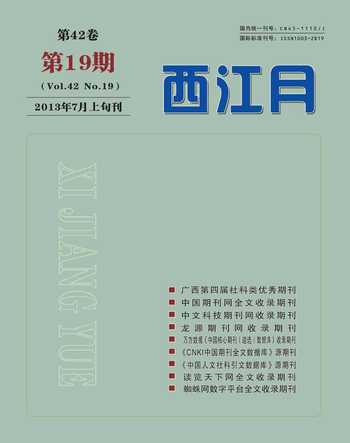Analysis of A Rose for Emily from the Perspective of New Historicism
张莉 卢沛沛
【Abstract】New Historicism is a mode of literary study. “Subversion” and “Containment” are two feasible tools employed by New Historicists to analyze the literature works. “Subversion” can be comprehended as the subversion of the dominant discourse, whereas “containment” as the containment of the subversive forces. In A Rose for Emily, the heroine Miss Emily “subverts” the tradition and social rules through a strand of eccentric yet horrible acts to guard her love. On the other hand, the “subversive” force is checked by “containment”.
【Key words】A Rose for Emily; New Historicism; subversion; containment
Introduction
A Rose for Emily was William Faulkner's first short story to be published in a national magazine. To some extent, its intricate plot and crafty unconventional style result in various interpretation possibilities. More significantly, historical sense permeates throughout the story. The story is set in the post Civil War period which, more often than not, evokes peoples complicated emotions and profound meditation upon the past history to illuminate the future for the Americans. In this sense, the story can be analyzed from the perspective of New Historicism.
1. “Subversion” and “Containment”
To analyze A Rose for Emily from the new historical perspective, two main theoretical tactics are adopted—“subversion” and “containment”.
With the aid of the dominant discourse and the discourse hegemony, the authority always succeeds in preserving the stability of its control. But there is an urgent necessity to subvert its power so as to make its presence justifiable and visible although the efficiency of this subversion is not boundless. In order to sustain its power, any durable political and cultural order not only to some degree allows, but actively fosters “subversive” elements and forces, yet in such a way as more effectively to “contain” such challenges to the existing order. That is to say, subversion is to subvert the containment while containment is to contain the subversion.
2. “Subversion” and “Containment” in A Rose for Emily
2.1 Analysis of “Subversion” in A Rose for Emily
In A Rose for Emily, Emily goes against the grain and violates the dominant social discourses, the social customs, the social standards and the institutions. This can be proved by a series of seemingly eccentric, pitiful, deformed yet forceful behaviors of Miss Emily to protect her love.
With the development of plot, the subversive force of Miss Emily grows more and more powerful. Homer Barron comes back in town and back to Miss Emilys house three days after the leave of Miss Emilys cousins. This is when Miss Emily poisons Homer Barron to death and keeps his corpse at her house since then for about forty years. Her extreme yet bloody way to own love is unaccepted but it challenges the social rules, mores and the tradition.
In sum, subversion in every development of the story is the inextricable component of the story and contributes a lot to the central meaning and plot of the story.
2.2 Analysis of “Containment” in A Rose for Emily
The “containment” lies in the fact that Miss Emily does not actually get her love. At the outset, Homer Barron is dead, incapable of loving Miss Emily. Even when Homer is alive, he deserts her. In dozens of years, she keeps her lover secretly and she does not go out, leading a lonely life. The control and ban of social moral standard, of the law and the tradition can account for her doing so. If she reveals that she “lives” with Homer together, the town people will oppose it. Besides, the death of Homer will be discovered. Subsequently, Miss Emily will be punished by law. So Miss Emily remains silent all the time. In this way, the social custom “contains” the “subversive” forces. Furthermore, Miss Emily, the monument of the aristocracy, finally dies. The death of Emily symbolizes the disappearance of “subversive force”. However powerful the subversive force is, at last it disappears completely.
3. Conclusion
In A Rose for Emily, subversion and containment can be found. Subversion is manifested in the rebellion of social ideology representing the order of the ruling classes through a strand of eccentric deeds of Miss Emily; whereas containment is the rebellion of the subversion forces by the social tradition. The two interact with each other through which negotiation can be realized. In this way, literature associates with reality closely and merges into the big flow of social energy.
Bibliography:
[1]Greenblatt, Stephen. Invisible Bullets: Renaissance Authority and its Subversion [J]. Glyph, 1981.
[2]Veeser, The New Historicism[M]. New York,: Routledge, 1989.
[3]林予婷.《献给艾米莉的玫瑰》中女主人公艾米莉的性格特征解析[J].外语论坛,2010(23).
[4]张京媛.新历史主义与文学批评[M].北京大学出版社,1991.
作者简介:张莉,华北电力大学(保定)外国语学院教授。卢沛沛(1988—),女,河北石家庄人,华北电力大学(保定)外国语学院硕士研究生。

